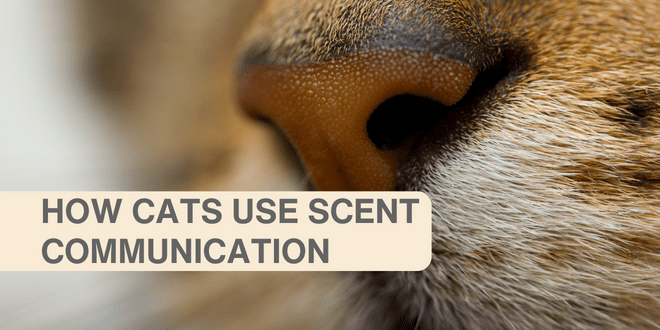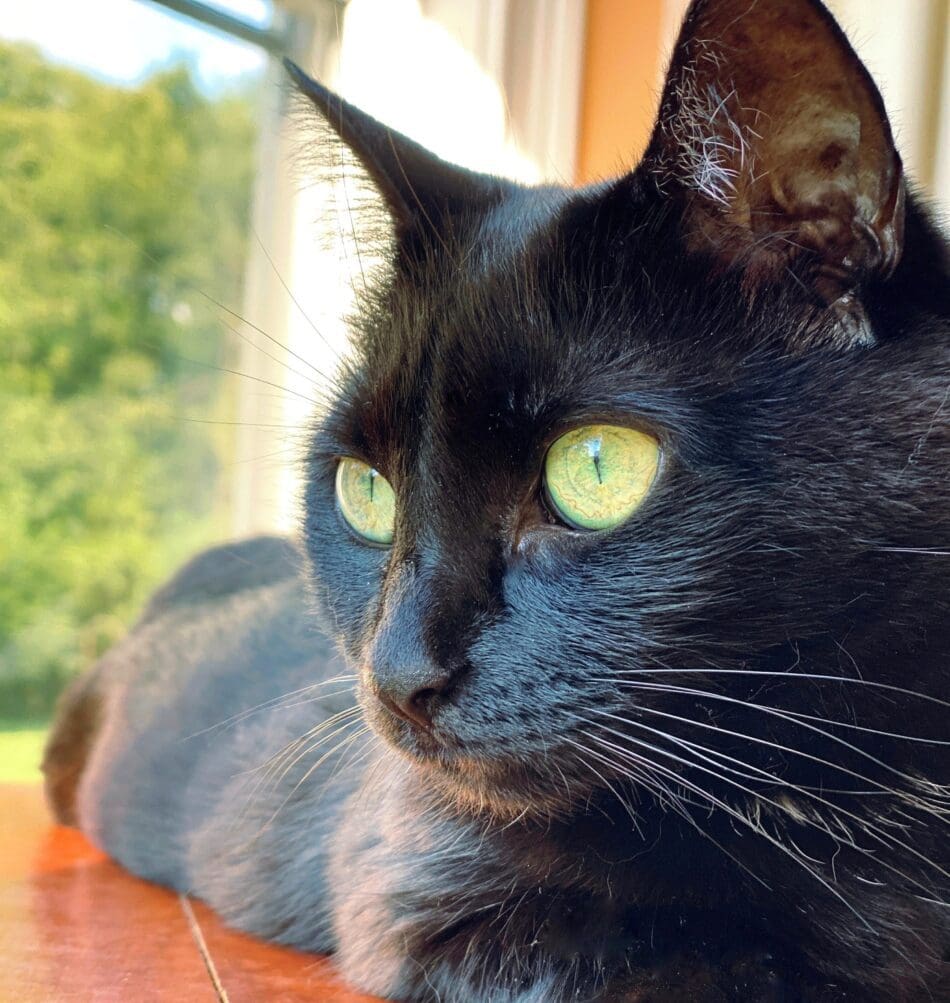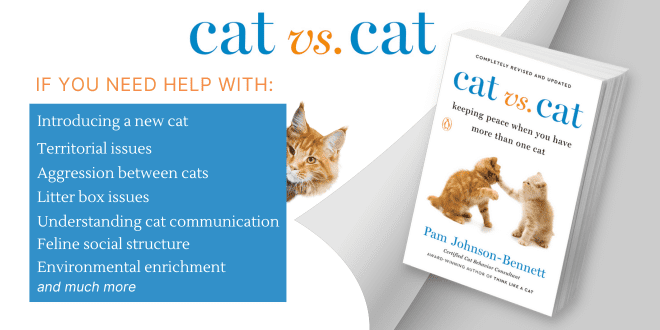
Scent matters to your cat. Scent is your cat’s calling card. It also tells your cat lots of information about other cats in the environment. For your cat, scent is a valuable communication tool. Being the verbal species that we are, humans don’t truly appreciate the volumes of information provided in scent, but trust me, your cat is on the case. The scent a cat leaves behind is an encyclopedia of information.
Your Cat’s Scent Glands
Cats have scent glands on their paws pads, their cheeks, lips, forehead, flanks, tail and there are also two little glands on each side of the rectum that release a very strong-smelling liquid to mark the cat’s stool as it passes through. Then of course there’s the scent of urine. Anyone who has ever lived with a cat or had a neighbor’s cat visit their garden is familiar with the smell of cat pee. If that urine belongs to an unneutered male then it increases the odor factor significantly.
Scent glands release pheromones. These pheromones are actually chemicals that provide information. In an outdoor setting, scent communication is vital because it reveals information about one cat to another without the risk (hopefully) of a physical confrontation. For an outdoor cat this is a very important survival tool. The fewer physical altercations that occur, the greater the chances kitty will live unscathed to see another day.
How Cats Use Scent
Scent is used to identify members of the same colony, social group, define territory, create familiarity, announce reproductive status, learn more about unfamiliar cats in the environment, self-soothe, hunt, bond with another, or as a form of covert aggression. Scent is vital in a cat’s daily life and it’s a complex form of communication.
Head bunting. The scent glands around the face are identified as friendly or low-intensity. Head bunting (commonly referred to as head butting) is a behavior cats engage in toward another cat, dog, or human with whom they have a friendly relationship. Head bunting is not displayed toward inanimate objects; it’s a behavior reserved as a bonding gesture. Some people assume head bunting is the way cats use scent to mark you as their property, but the behavior is not that simplistic. Scent exchange is also used as an affiliative gesture.
Check rubbing. You’re also probably very familiar with the sight of your cat cheek-rubbing on objects in the home. This is a comforting behavior for and reflects a cat’s sense of security and familiarity with the environment. A cat will cheek-rub to reinforce familiarity. If your cat cheek-rubs quite often you’ve probably noticed dark spots on door frames or corners of objects. Those dark spots are the scent deposits. Try to resist the urge to clean those spots because the scent your cat leaves there is very reassuring.

Photo: Pam Johnson-Bennett
Paw pads. The scent glands in the cat’s paw pads get used when when scratching on objects for marking. In addition to leaving a visual mark from the claws, a cat leaves an olfactory mark through the scent glands. Now that’s an animal who really makes sure their presence is known! Having both a visual and olfactory mark is important for safety. The visual mark allows other cats to see the scratch marks from a distance to they will know they’re entering another cat’s area. If they choose to come closer, they will then be able to identify the olfactory marks. The visual and scent marks also help the cat who left the mark identify their own area as well.
Spraying. The pheromones associated with the back end of the cat, such as the ones released during urine-marking are high-intensity. There’s nothing calm about those pheromones. When a cat sprays it’s done under stressful or exciting circumstances. Cats spray for a variety of reasons. Spraying in intact males is used to claim territory, status, aggressive display, and announce mating availability to females in the area. Intact females will spray to announce their availability and they will also spray to claim hunting territories.
Intact cats (both male and female) can spray for a variety of reasons. It can be for territorial marking, as a victory display after a fight, covert aggression, self-soothing, and a way to safely exchange information with an unfamiliar cat. Spraying is very complex and not just about marking territory.
The processing equipment. And with all that incredible scent depositing going on in a cat’s environment, it’s a good thing they also have such a highly developed sniffer to decode all the information left by other cats’ pheromones. Cats have 200 million scent receptors, as opposed to our 5 million.
Cats also have a special scent analyzer called the Jacobson’s organ or vomeronasal organ. It’s located in the roof of the mouth. It’s essentially two ducts in the roof of the mouth that lead to the nasal cavity. A cat will open his mouth and get the scent collected on the tongue where he will then flick it up to the vomeronasal organ for in-depth analysis. You can tell when the cat is in the process of this because he will have his mouth partially open in what is referred to as the flehmen grimace or flehmen reaction. Males typically engage in this behavior when he comes across the urine of females in heat but all cats will use their vomeronasal organ whenever they come across a scent requiring more investigation.
The cat’s body is so amazing, isn’t it?
Need More Information?
For more information on cat behavior, check out the best-selling books by Pam Johnson-Bennett. Pam’s books are available at bookstores and online. We’ve also included Amazon links here on our website.
If you have a question regarding your cat’s health, please contact your veterinarian. This article is not intended as a replacement for your cat’s veterinary care.
 Problem Solving & Advice by Pam Johnson-Bennett Cat Behavior Expert & Best-selling Author
Problem Solving & Advice by Pam Johnson-Bennett Cat Behavior Expert & Best-selling Author



